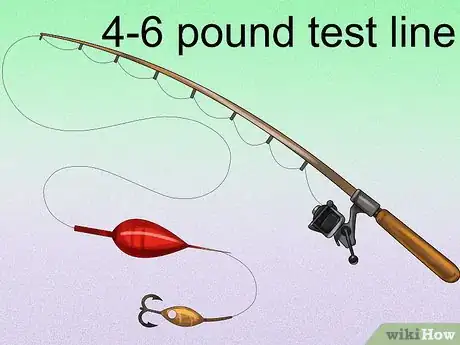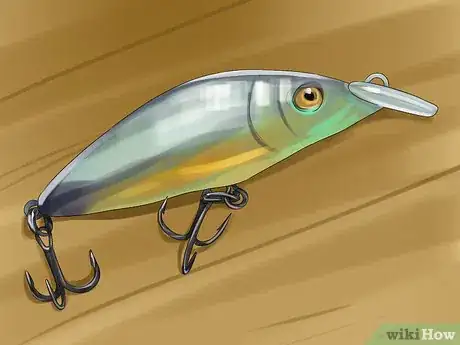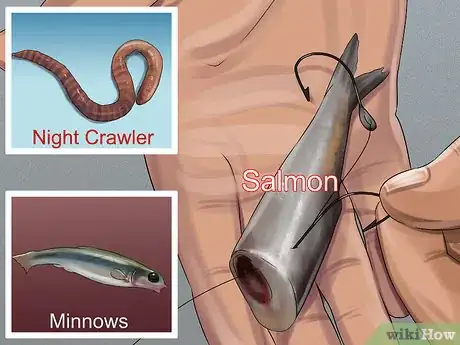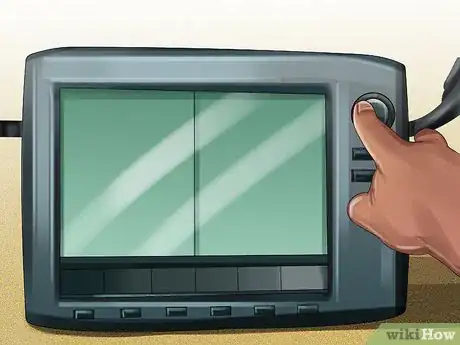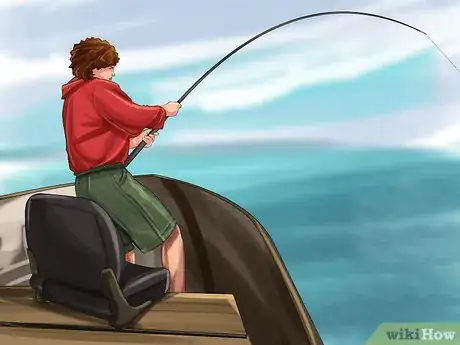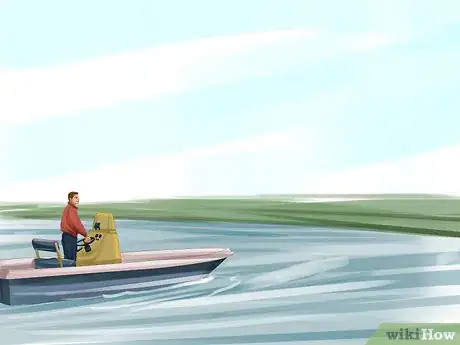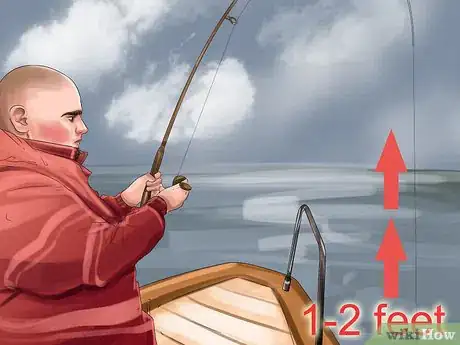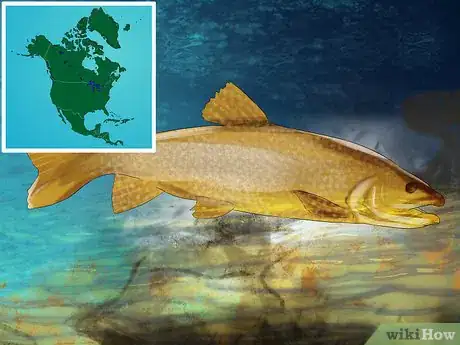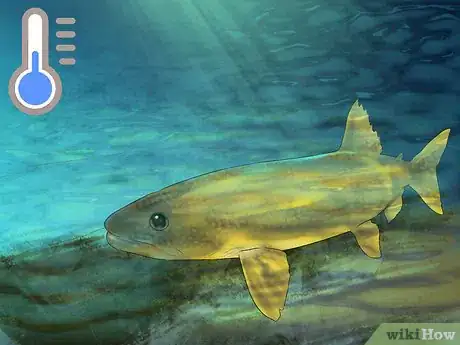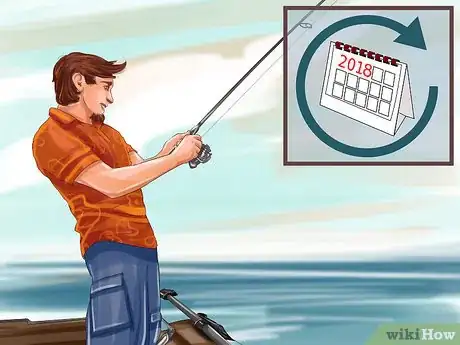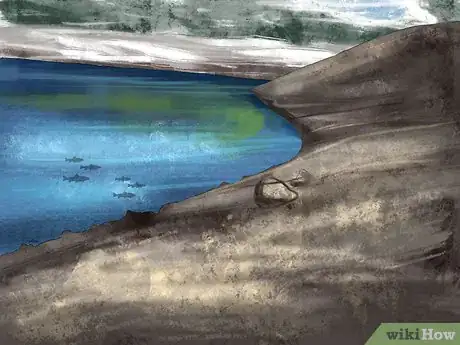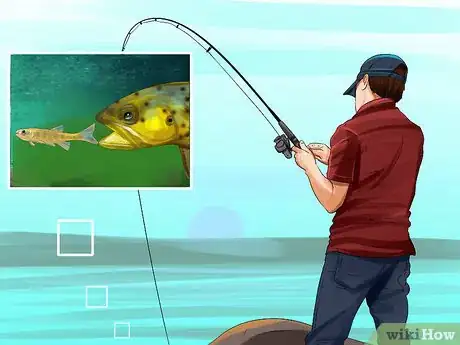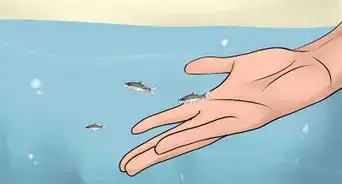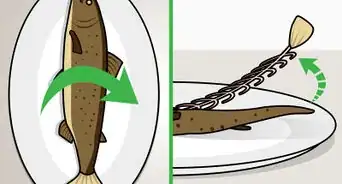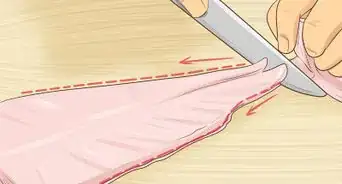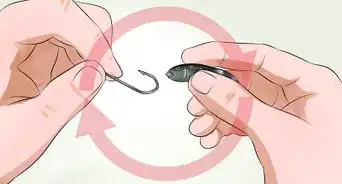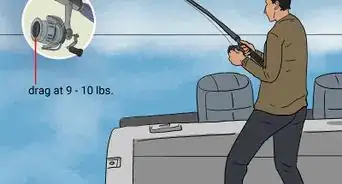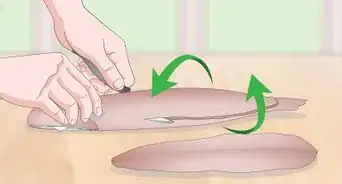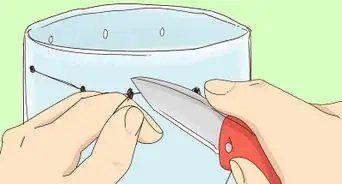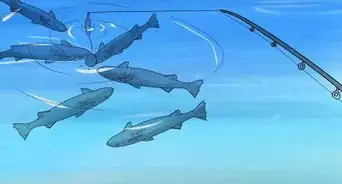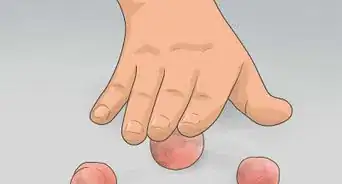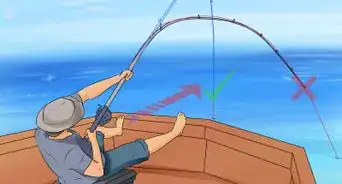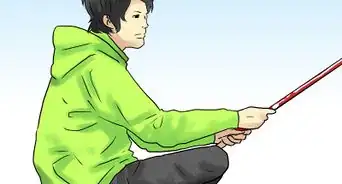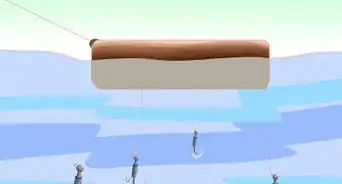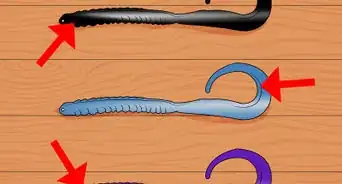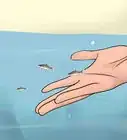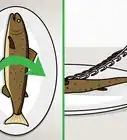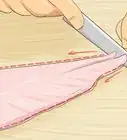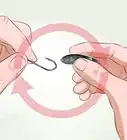wikiHow is a “wiki,” similar to Wikipedia, which means that many of our articles are co-written by multiple authors. To create this article, 16 people, some anonymous, worked to edit and improve it over time.
There are 9 references cited in this article, which can be found at the bottom of the page.
wikiHow marks an article as reader-approved once it receives enough positive feedback. In this case, 89% of readers who voted found the article helpful, earning it our reader-approved status.
This article has been viewed 426,151 times.
Learn more...
Lake trout are one of the most popular fish among anglers in North America. These freshwater fish have dark green bodies and pale yellow spots, and they love cold, deep lake water. Due to overfishing, their natural population has been depleted, but they're commonly stocked in lakes from the midwestern US through Canada.
Steps
Choosing Bait and Tackle
-
1Use a light-action rod with 4 to 6 pound test line. This is the best rod to use for trout fishing and allows you to use a variety of techniques to catch your trout. The lighter line has less friction with the water, allowing you cast your line to the very bottom of the lake with ease.
- Some lake trout can be over 35 pounds, you will need a heavier rod for these. If you know you're fishing a lake that has massive fish, bring a heavier rod as well.
- Use an open faced spinning reel with a thin line. Be sure to put the reel on the rod facing the correct direction.
- Use either number 6 or 10 hooks.
-
2Choose a lure that mimics native baitfish. Since lake trout feed on a number of different native species, the best lure is the one that most closely mimics their individual food preferences. If you're not sure which lure is best, ask around at the local bait and tackle shop. Local anglers will be able to tell you what to use to catch lake trout in your area.[1]
- Small weightless lures and spinners typically make the best artificial bait.
- Add shiny metal foil or beads to further attract the trout.
Advertisement -
3Use night crawlers, minnows or salmon for live bait. If you prefer to use live bait, these three options are usually the best bet. Again, ask at your local tackle shop to find out what the fish in your area are biting on lately. Fish have different preferences depending on the season and region.[2]
Using Effective Techniques
-
1Use a depth finder.[3] Since catching lake trout is so dependent on finding out at what depth they're located, investing in a depth finder can make or break your day's success. Lake trout prefer to be in approximately 53 degree water.[4] Their depth and eating habits will change with the weather.
- In the early spring and fall lake trout swim at a depth of between 35 and 45 feet (10.7 to 13.7m).
- Later in the spring and in the summer they move deeper to 50 to 65 feet (15.4 to 19.8m).
- In cold weather, when the lake is iced over, trout are found closer to the surface, at a depth of about 10 feet (3 m).
-
2Try jigging for trout. This technique is best in areas where fish are concentrated, so you might want to try it if you're fishing a well-stocked lake. Use a spoon jig or a white buck-tail jig, and bait with a minnow or a piece of sucker meat. Drop your line near the bottom of the lake and slowly work your way up, jiggling the line to so that your jig resembles a wounded baitfish and attracts your trout.
- This technique does not require any special rod or reel. Be sure the jig you use is light, just 1/2 ounce to 3/4 ounce.
- This technique works best from a boat, rather than the shore.
-
3Troll for trout when they're scattered. Trolling is the better technique to use when fish aren't concentrated into schools, but scattered in different places around the lake. You "troll" for fish by moving around to find them. Be sure to use your depth finder, and you might want to use a fish finder, too. You can troll for fish from a boat or on shore, as long as you'll be able to cast your line deep enough. To troll for fish, do the following:[5]
- Use a spinning reel or bait caster and any type of rod with the properly weighted line. Attach a weight so that you can cast to the proper depth and drag the hook along without it rising to the surface. The weight is determined by your speed and the season. Use a light lure or a spoon, or use a live minnow that's hooked through the lips.
- Drive your boat to the middle of the lake and use your depth finder and fish finder to find a good starting spot. Start trolling at a slow speed once you have reached the desired depth. The key is to go very slow.
-
4Watch the line continuously. Large trout will slowly swim away after biting the bait. You will have to feel and watch the line to know when you have a bite. Small trout will furiously swim away, causing the line to vibrate quickly. Jerk the rod up 1 to 2 feet (31 to 61cm) to further hook the trout once it has bitten.
- Reel the trout in slowly, keeping the rod above your head.
- Remove the trout from the hook and either place in a cooler or return back to the water.
Finding Lake Trout
-
1Look in North American lakes. The largest concentration of lake trout is found in Ontario, Canada, where 25 percent of the world's lake trout population lives.[6] Lake trout are commonly found in lakes stretching as far south as Kentucky. They have also been introduced to lakes in Europe, Asia and South America.
- Lake trout are so popular among anglers that their natural population has been overfished. Lake trout are commonly stocked in lakes to meet the demand of anglers.[7]
- Since lake trout like cold water, they're less commonly found in warmer regions like the southern US.
-
2Find them in cold, deep water. Lake trout like to spend time where it's colder. You're more likely to find a good supply of lake trout in a deep, cold lake than in a shallow, warmer lake. Check around your region to find out the best places to go trout fishing, or ask local anglers where the deepest spots of your local lake are.[8]
-
3Fish for trout all year round. Trout fishing can be done during any season. It's important to know where they like to spend time in different types of weather. During the summer, trout can be found in the deepest, coldest parts of the lake. After the lake ices over, they're found closer to the top, since the shallower waters are cool enough for them.
- Once you find a good spot for trout fishing during a certain season, return to it the next year during the same season and you're likely to find a good trout supply there again.
- If there's one time of year when trout are most difficult to catch, it's probably the middle of summer, when the lake is warmest and the trout are in its darkest depths. It's more difficult to figure out where the trout are hanging out and reach them with your line.
-
4Fish near dropoffs and ledges. Trout are often found near natural dropoffs and ledges, since the water near these features tends to be deeper and cooler. If you're fishing from the shore, it's especially helpful to set up near a dropoff rather than casting your line from a place where the grade is more gradual.
-
5Look near feeding areas. Trout feed on smaller fish as well as plankton, and you can often find them under a school of smaller fish.[9] They hang out underneath to wait for a weaker fish to get close enough to eat. These smaller fish feed on underwater vegetation. If you're fishing from a boat, set up near an area with plenty of vegetation to see if trout might be hiding under the smaller schools of fish.
- Knowing the specific feeding habits of the smaller baitfish in your region can be very helpful. Talk to an experienced angler at a bait and tackle shop to find out more about the eating habits of local lake trout.
Community Q&A
-
QuestionCan I successfully troll for lake trout if I don't have a down rigger?
 Community AnswerYes, with a heavy action rod and lead core line you can still reach up to 60 feet deep.
Community AnswerYes, with a heavy action rod and lead core line you can still reach up to 60 feet deep. -
QuestionWhat's the ideal size rod to use when trout fishing?
 Community AnswerDepends on the size of trout you're after. A light-action rod will work for a small eating-size trout, but for trophy-sized trout I would suggest a medium- to heavy-action rod.
Community AnswerDepends on the size of trout you're after. A light-action rod will work for a small eating-size trout, but for trophy-sized trout I would suggest a medium- to heavy-action rod. -
QuestionI'm going up to a lake in the summer and I want to catch a big fish. I need help because it is a big lake. What fish should I look to get?
 Community AnswerIt depends on how big of a lake we're talking about. A fairly big lake could produce musky, walleye, and pike. They will also have some smaller panfish. They're all fun fish to catch, but if you want something really big, I would go for musky.
Community AnswerIt depends on how big of a lake we're talking about. A fairly big lake could produce musky, walleye, and pike. They will also have some smaller panfish. They're all fun fish to catch, but if you want something really big, I would go for musky.
Warnings
- Check the local laws before fishing. Fishing licenses are often required.⧼thumbs_response⧽
Things You'll Need
- Rod with reel
- Fishing line
- Bait
- Boat
References
- ↑ http://www.fishingtipsdepot.com/lake-trout-fishing-tips.php#lake-trout-fishing-facts
- ↑ https://www.fishingtipsdepot.com/lake-trout-fishing-tips/#lake-trout-fishing-tips
- ↑ https://bassfishing-gurus.com/lake-trout-deep-water-fishing/
- ↑ https://www.merkelscamp.com/laketrouttips.htm
- ↑ https://www.northernontario.travel/algoma-country/attractor-trolling-for-lake-trout-try-these-tips-tricks-when-fishing-in-algoma-country
- ↑ https://www.ontario.ca/page/inland-lakes-designated-lake-trout-management
- ↑ http://www.fishingtipsdepot.com/lake-trout-fishing-tips.php#lake-trout-fishing-facts
- ↑ https://www.michigan.gov/dnr/0,4570,7-350-79135_79218_79614_82519---,00.html
- ↑ https://www.fishingtipsdepot.com/lake-trout-fishing-tips/#lake-trout-info
- Videos provided by The Consummate Sportsman
About This Article
If you want to catch lake trout, use a light-action rod with 4 to 6 pound test line. For your lure, choose a spinner with a weightless lure or opt for salmon or minnows if you prefer live bait. Then, look for a cold, deep lake in your region since lake trout like to feed in cooler waters. When you're fishing, try jigging for trout by attaching a minnow to a spoon jig. Run your line to the bottom of the lake, then bring it up slowly while jiggling the line. Alternatively, drag a weighted line under water from your boat to troll for trout. For tips on how to look for trout feeding areas, keep reading!
